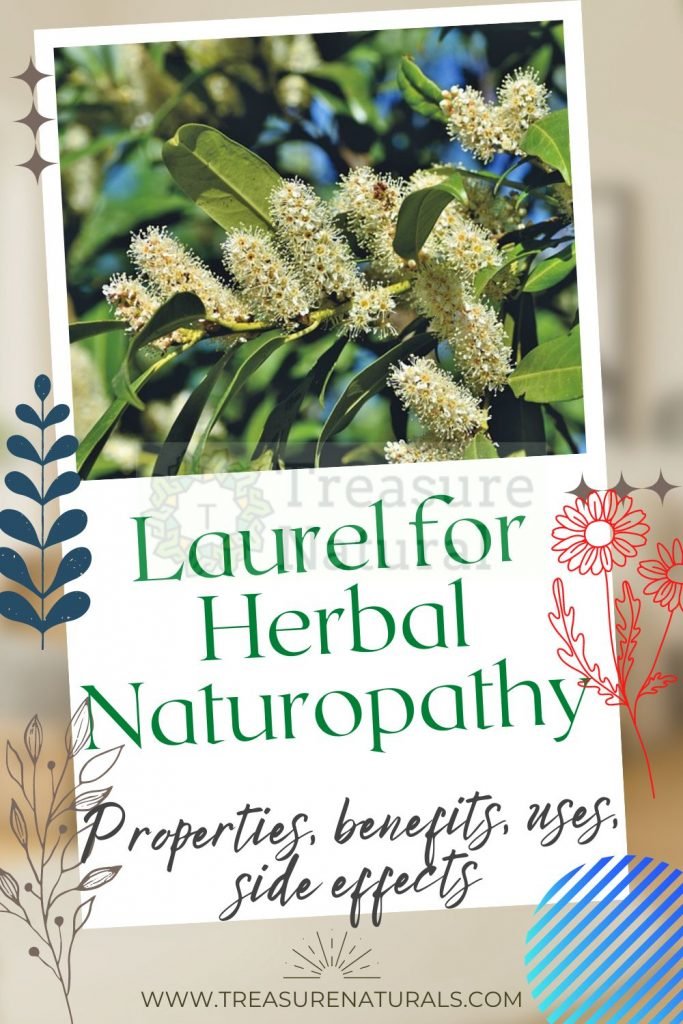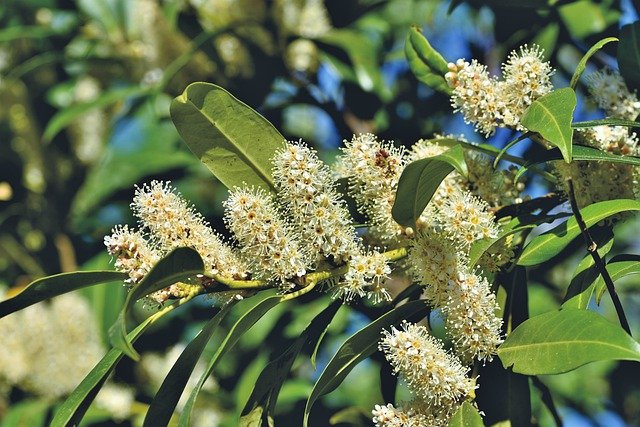
Laurel is a plant with aromatic and digestive properties, also useful for the well-being of the respiratory system.
The laurel (Laurus nobilis)is a plant of the Lauraceaefamily. Useful in case of stomach disorders and colic, it is used to treat fever and cough. Let’s find out better.
Properties of bay leaf
Bay leaves and berries contain essential oil, fatty acids, sesquiterpene lactones and flavonoids.
Thanks to the presence of these substances, bay leaf has properties:
- Aromatic;
- aperitifs;
- digestive;
- carminative;
- expectorants;
- sweats;
- anti-inflammatory;
- repellents
Benefits of bay leaf
Although today the therapeutic use of bay leaf is outdated, this plant has been widely used in the past for its healing properties.
In particular, laurel is used traditionally:
- To relieve colic and stomach disorders;
- to promote digestion;
- to help expel gases from the gastro-intestinal system, in the presence of meteorism or aerophagia.
Both the leaves and the berries exert diaphoretic action, useful for stimulating sweating, in case of fever and flu states; and expectorant, indicated to eliminate bronchial phlegm and in case of cough.
In external use, fresh berries are used to prepare laurel oleolite, or laurinate oil, with anti-inflammatory, hemostatic and astringent effect, extremely effective for soothing rheumatism, arthritis, muscle pain or to facilitate the resumption of the use of the joints after plaster casts, against traumas of various kinds, bruising and hematomas.
Finally, the lauric acid contained in the leaves has natural repellent properties against insects and parasites.
Which bay leaf is edible?
The edible bay leaf, used as a flavoring in cooking, is the Laurus nobilis, a small tree of the Lauraceae family and known as bay leaf or laurel.
The difference between laurel and bay leaf
Laurel and bay leaf are not the same plant. The laurel is a small tree of the Lauraceaefamily, while the laurel or lauroceraso is an evergreen shrub of the Rosaceae family, often cultivated for ornamental purposes as a hedge. The main difference, in addition to the bearing, lies in the leaves:
- The bay leaf is dark, wavy along the margins and, if broken, gives off a characteristic aromatic smell.
- The leaves of the laurel are lighter, have no wavy margin and crumpled smell of bitter almond.
How to use bay leaves
Bay leaves are used as a flavoring in cooking, whole or chopped and as an herbal remedy. In general, it is preferred to subject the leaves to a brief decoction instead of resortingto the infusion of bay leaf, because the bay leaves are particularly leathery.
How to use
Decoction of bay leaf
from 10 to 20 gr of bay leaves per one liter of water.
Pour the bay leaf into boiling water and turn off the heat. Cover and leave to infuse for 10 min. Filtering the infusion and drinking the infusion to promote digestion, above all, for those with fermentation problems, helps in cases of loss of appetite, fights stomach pains and flu states.
Ointment with bay berries
Known as laurin ointment, it is prepared with bay oil obtained from berries and is used in case of rheumatic pains.
Laurel essential oil
Dilutium is used in olive oil for massages against rheumatism and as an insecticide and repellent in the garden and for pets.
Contraindications
Used as a flavoring or in herbal tea, bay leaf has no toxicity. The use of products containing bay leaf is contraindicated in allergic people, who may develop reactions even by contact with the leaves or with essential oil.
Description of the plant
The laurel tree is common in Mediterranean areas, where it is born spontaneously. It has an erect stem and blackish green bark and has an arboreal or shrubby habit.
leaves, ovate, are dark green, leathery and very
fragrant; the upper page is glossy of deep green color, the lower one is matte. Laurel is a dioecious plant, that is, there are male and female specimens. The laurel flowers, light yellow in color, are gathered to form an umbrella inflorescence and appear in spring.
The fruits are black and shiny drupes (when ripe) that contain the bay seeds.
The habitat of the laurel
Widespread along the northern coastal areas of the Mediterranean Sea, from Spain to Greece and Asia Minor, in Italy it grows spontaneously in the central-southern areas and along the coasts: while it is cultivated in the northern regions.
Background

The Greeks thought that its leaves had the power to transmit the gift of divination, to ward off bad luck and contagious diseases.
At Delphi, home to apollo’s oracle, the god’s priests and pythia chewed or burned laurel leaves to establish communication with the Gods and slept on “mattresses” made of layers of his spindles, to foster premonitory dreams.
In the myth told by Ovid in his Metamorphoses, the nymph Daphne, whose name means “laurel”(laurel), was the first love of the god Apollo. The young woman, to escape the courtship of the god, had her mother Gea transformed into a laurel plant. The god, now powerless, decided to honor this plant by making it evergreen and to make it sacred to him. From that moment on, men would use it as a symbol of glory, to be placed on the heads of the best, heroes, geniuses and sages, capable of exhilarating deeds.
Even in Rome it was considered the sign of triumph, so much so that the victorious generals wore a crown made with its fronds, when they were celebrated on the Capitol. It is said, in fact, that it was Jupiter himself who gave it to Caesar to celebrate the victories of the emperor.
For a long time Lauro was used as a remedy against the plague, while, in the Middle Ages, bay leaves were considered a natural remedy suitable for regularizing the menstrual cycle.
With the laurel oil, Aleppo soap is prepared, typical of Syria and more precisely of the city of Aleppo, from which it takes its name, particularly suitable for delicate skin and for those suffering from allergies and intolerances to perfumes and other additives, commonly present in detergents for personal hygiene.






